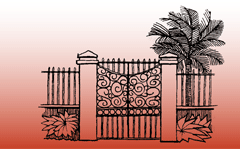Abstract
Many donated books in circulating collections have value as historical artifacts due to unique interventions by their former owners, such as marginalia, inscriptions, and insertions. These interventions can potentially offer a trove of evidence of how books have been consumed across time and what they meant to past cultures, but are generally undocumented and therefore undiscoverable through library catalogs. Moreover, as circulating copies, these books may be vulnerable to damage, loss, and withdrawal. Book Traces @ UVa is a two‐year effort to survey pre‐1923 books in the University of Virginia Library circulating collection for uniquely modified volumes and enhance our catalog to make them more readily discoverable. Because our target population is large—more than 92,000 volumes—we are developing techniques for rapidly sampling the collection through a randomized, statistically representative selection from each call number subclass. We believe our statistical samples will point the way for deeper exploration of subject areas where the books are especially rich in evidence of historical readership, and in this paper we present some of our preliminary findings as well as an overview of our survey and sampling techniques. We also suggest how the Book Traces experiment in considering non‐rare books as historical artifacts can reshape libraries’ approach to retention and off‐site storage decisions.
Rapid Collections Surveying With Book Traces @ UVa
Many donated books in circulating collections have value as historical artifacts due to unique interventions by their former owners, such as marginalia, inscriptions, and insertions. These interventions can potentially offer a trove of evidence of how books have been consumed across time and what they meant to past cultures, but are generally undocumented and therefore undiscoverable through library catalogs. Moreover, as circulating copies, these books may be vulnerable to damage, loss, and withdrawal. Book Traces @ UVa is a two‐year effort to survey pre‐1923 books in the University of Virginia Library circulating collection for uniquely modified volumes and enhance our catalog to make them more readily discoverable. Because our target population is large—more than 92,000 volumes—we are developing techniques for rapidly sampling the collection through a randomized, statistically representative selection from each call number subclass. We believe our statistical samples will point the way for deeper exploration of subject areas where the books are especially rich in evidence of historical readership, and in this paper we present some of our preliminary findings as well as an overview of our survey and sampling techniques. We also suggest how the Book Traces experiment in considering non‐rare books as historical artifacts can reshape libraries’ approach to retention and off‐site storage decisions.
